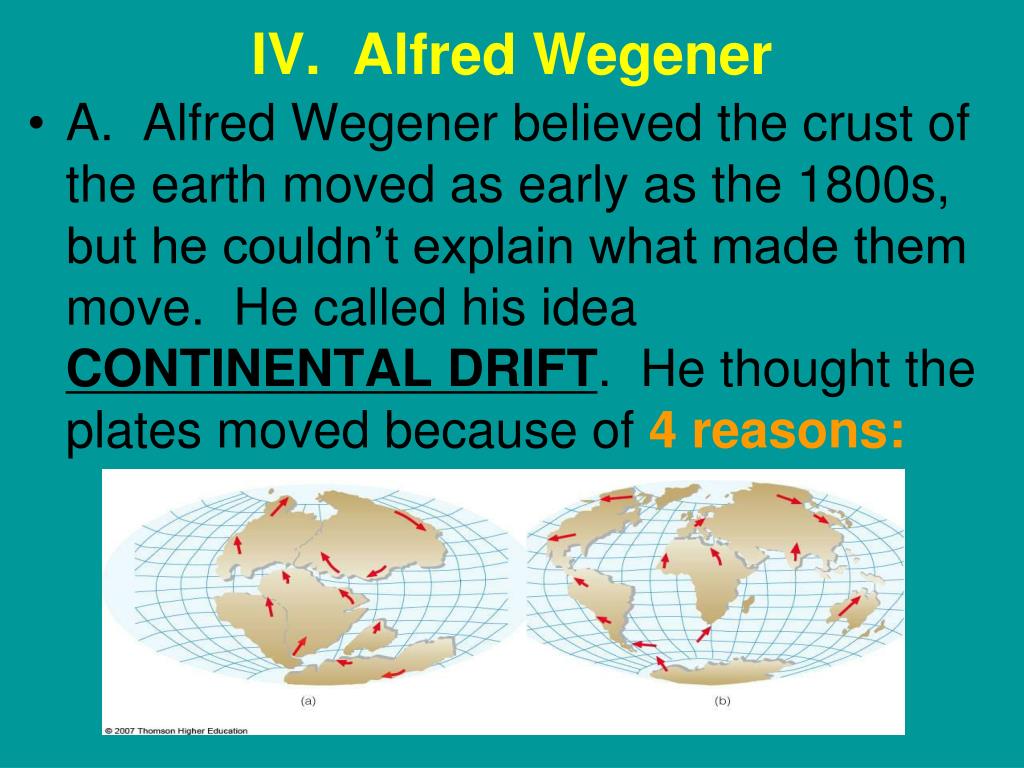

The minutes of the meeting noted that there was “no discussion due to the advanced hour,” much as when Darwinian evolution made its debut. Wegener called his idea “continental displacement” and presented it in a lecture to Frankfurt’s Geological Association early in 1912. Finally, he pointed out how layered geological formations often dropped off on one side of an ocean and picked up again on the other, as if someone had torn a newspaper page in two and yet you could read across the tear. Next he assembled the evidence that plants and animals on opposite sides of the oceans were often strikingly similar: It wasn’t just that the marsupials in Australia and South America looked alike so did the flatworms that parasitized them. Then he fit them together on a globe, like jigsaw-puzzle pieces, to form the supercontinent he called Pangaea (joining the Greek words for “all” and “earth”). He cut out maps of the continents, stretching them to show how they might have looked before the landscape crumpled up into mountain ridges. He was an Arctic explorer and a record-setting balloonist, and when his scientific mentor and future father-in-law advised him to be cautious in his theorizing, Wegener replied, “Why should we hesitate to toss the old views overboard?” He was a lecturer at Marburg University, not merely untenured but unsalaried, and his specialties were meteorology and astronomy, not geology.īut Wegener was not timid about disciplinary boundaries, or much else.

But no one had made much of it, and Wegener was hardly the logical choice to show what they had been missing. Others before him had noticed that the Atlantic coast of Brazil looked as if it might once have been tucked up against West Africa, like a couple spooning in bed. The idea that smashed the old orthodoxy got its start on Christmas 1910, as Wegener (the W is pronounced like a V) browsed through a friend’s new atlas. It might have been the end of a lesser man, but as with the vicious battles over topics ranging from Darwinian evolution to climate change, the conflict ultimately worked to the benefit of scientific truth. As often happens when confronted with difficult new ideas, the establishment joined ranks and tore holes in his theories, mocked his evidence and maligned his character. But there is hardly a better example of just how messy and emotional science can be than Wegener’s discovery of the vast, turbulent forces moving within the earth’s crust. We like to imagine that knowledge advances fact upon dispassionate fact to reveal precise and irrefutable truths. But in Wegener’s day, geological thinking stood firmly on a solid earth where continents and oceans were permanent features.

Alfred wegener theory of plate tectonics how to#
Continental drift and the more recent science of plate tectonics are now the bedrock of modern geology, helping to answer vital questions like where to find precious oil and mineral deposits, and how to keep San Francisco upright. It was a century ago this spring that a little-known German meteorologist named Alfred Wegener proposed that the continents had once been massed together in a single supercontinent and then gradually drifted apart. What’s even more extraordinary, though, is that the prosecutors based their case on a scientific insight that was, not long ago, the object of open ridicule. The charge is remarkable partly because it assumes that scientists can now see not merely beneath the surface of the earth, but also into the future. Six seismologists and a civil servant, charged with manslaughter for failing to predict a 2009 earthquake that killed 308 people in the Apennine Mountain city of L’Aquila, in Italy, will serve six years in prison.


 0 kommentar(er)
0 kommentar(er)
